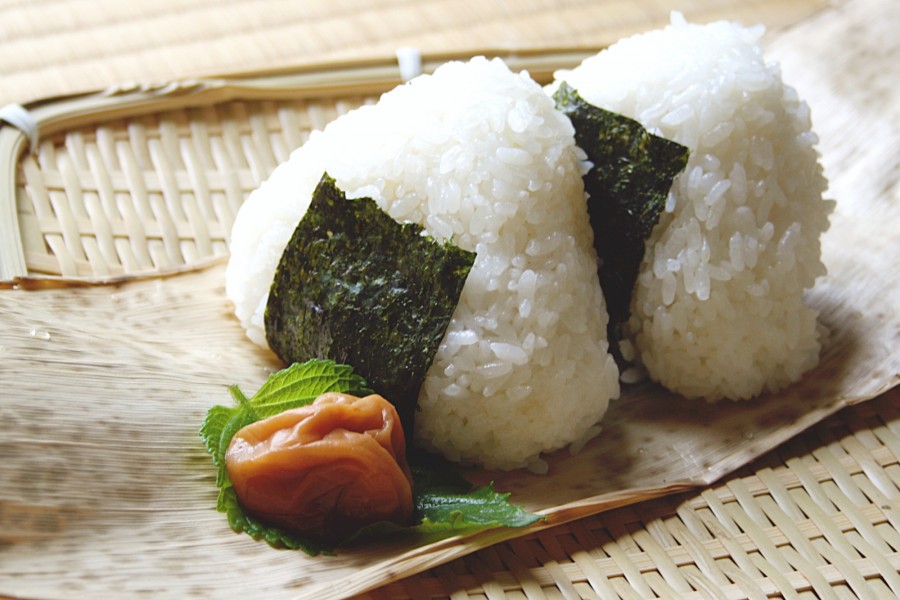Onigiri
お握り, おにぎり, 御握り, お結び, おむすび, 握り飯, にぎりめし, o-nigiri, o-musubi, nigirimeshi, rice ball
Onigiri , also known as omusubi (お結び) or nigirimeshi (握り飯), is a Japanese rice ball made from white rice. It is usually formed into triangular or cylindrical shapes, and wrapped in nori (seaweed).[a] Onigiri traditionally have sour or salty fillings such as umeboshi (pickled Chinese plum), salted salmon, katsuobushi (smoked and fermented bonito), kombu, tarako or mentaiko (pollock roe), or takanazuke (pickled Japanese giant red mustard greens). Because it is easily portable and eaten by hand, onigiri has been used as portable food or bento from ancient times to the present day. Originally, it was used as a way to use and store left-over rice, but it later became a regular meal. Many Japanese convenience stores and supermarkets stock onigiri with various fillings and flavors. It has become so mainstream that it is even served in izakayas and sit-down restaurants. There are even specialized shops which only sell onigiri to take out. Due to the popularity of this trend in Japan, onigiri has become a popular staple in Japanese restaurants worldwide. Despite common misconceptions,[citation needed] onigiri is not a form of sushi and should not be confused with the type of sushi called nigirizushi or simply nigiri. Onigiri is made with plain rice (sometimes lightly salted), while sushi is made of rice with vinegar, sugar and salt. Onigiri makes rice portable and easy to eat as well as preserving it, while sushi originated as a way of preserving fish.
Source: Wikipedia

:max_bytes(150000):strip_icc()/__opt__aboutcom__coeus__resources__content_migration__serious_eats__seriouseats.com__recipes__images__2011__08__20110805-grilled-rice-ef2f2d51db7d43cbb8d56d50bbf44f8b.jpg)


:max_bytes(150000):strip_icc()/140422-onigiri-japanese-rice-balls-ddmfs-Beauty-1x2-1-dffd638281cc4f07b2a6e32b5bc5e0ff.jpg)